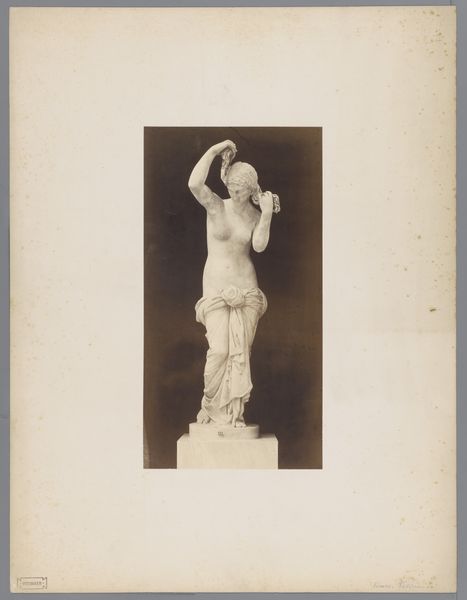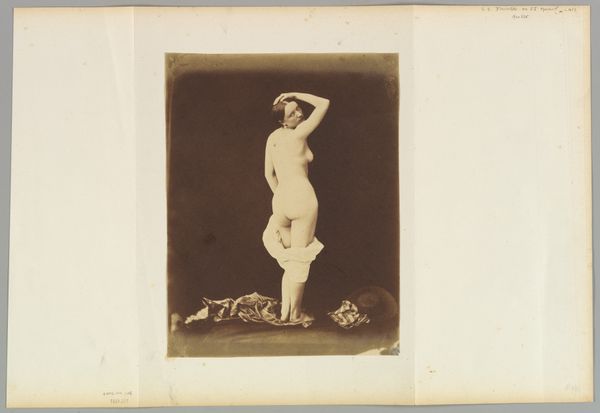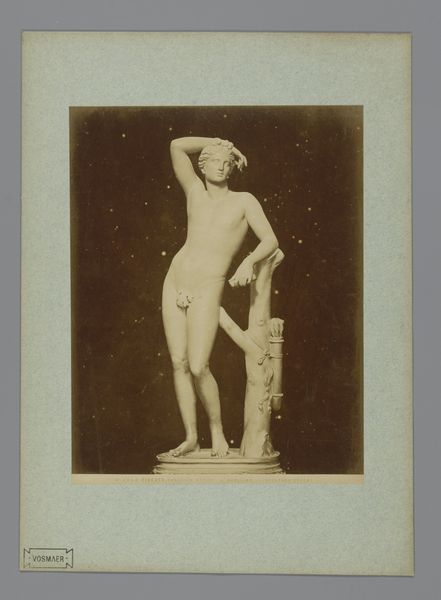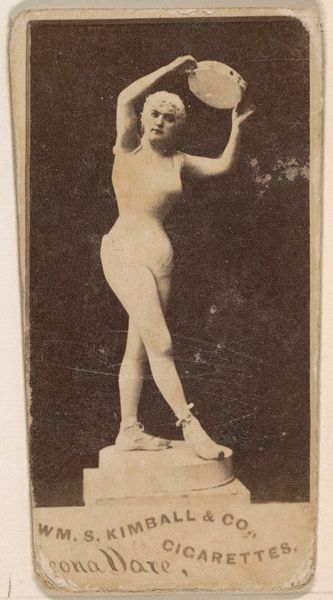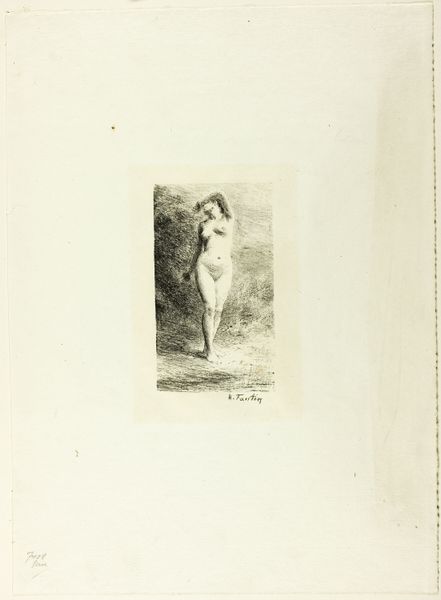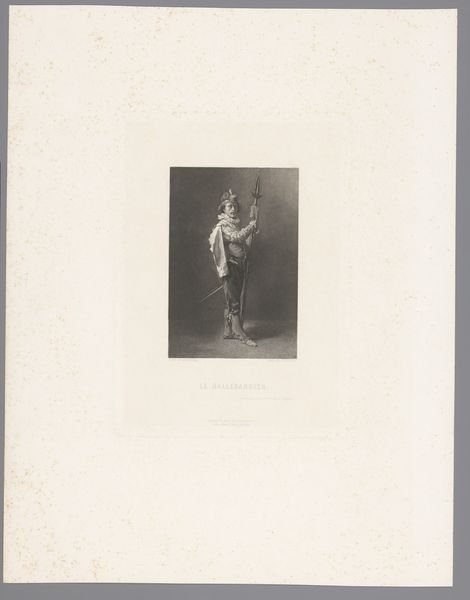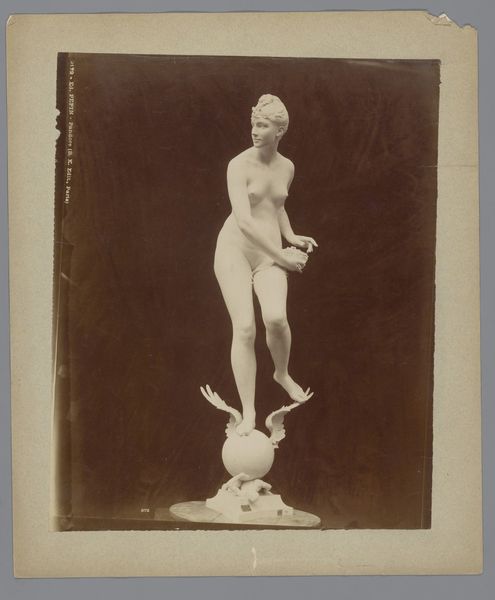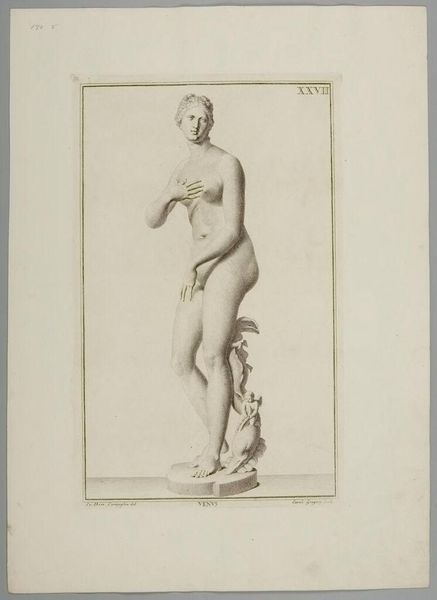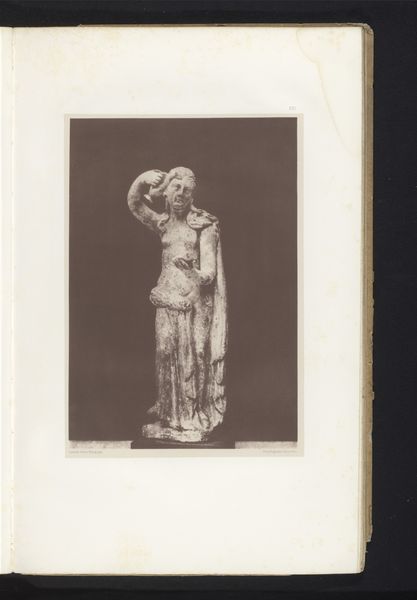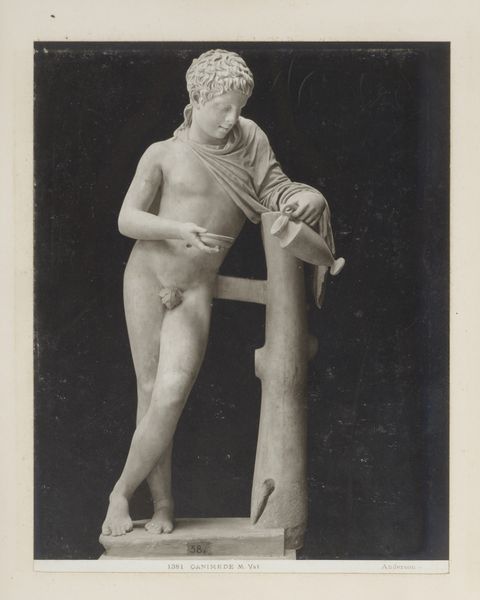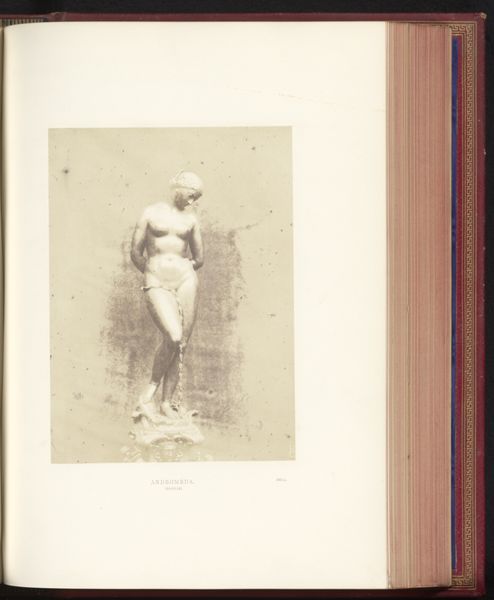
print, photography, sculpture
#
portrait
# print
#
photography
#
coloured pencil
#
sculpture
#
academic-art
Dimensions: height 347 mm, width 262 mm, height 188 mm, width 85 mm
Copyright: Rijks Museum: Open Domain
Editor: So, here we have "Gipsbeeldje van een putto," a photograph of what looks like a plaster cast putto, made sometime between 1860 and 1900. The sepia tone gives it a certain aged feel, like something out of a history book. How do you interpret this image? Curator: It's interesting to consider this as a document of artistic training and the reproduction of classical ideals during that period. These casts were commonplace in art academies. Where do you think this photograph was displayed? Editor: Maybe in an art classroom or a student's portfolio? Somewhere meant for instruction? Curator: Precisely. Think about the rise of photography coinciding with increased accessibility of art education. This image wouldn't just be art; it's also a tool, a reference point shaped by pedagogical intentions. Does that alter your initial view of its historical context? Editor: It does. I initially saw it as a simple representation, but now I realize it’s layered. It speaks to the institutional structure of art education and the dissemination of artistic standards. Curator: Exactly. And note "L'Ornementation Pratique" printed at the top, the plaster cast becomes more than just a sculpture, its use is defined. Photography enabled the mass production of 'practical ornamentation.' Consider then how power dynamics are always there in seemingly benign images. Editor: I see what you mean. What looked like just a photo of a sculpture actually reveals much broader cultural trends regarding art and how its taught and consumed. Curator: Yes, it provides an interesting example of how art history connects visual art with society. A small sculpture on one page with great significance! Editor: Definitely learned a lot about this seemingly simple print!
Comments
No comments
Be the first to comment and join the conversation on the ultimate creative platform.
